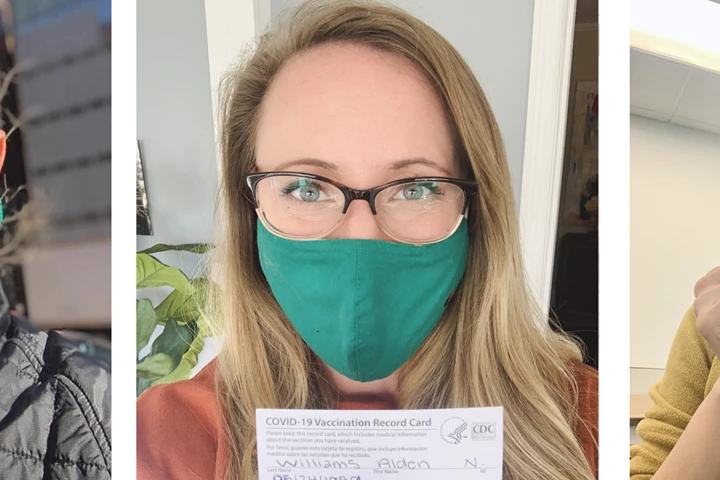On this day last March, the World Health Organization (WHO) declared the global COVID-19 outbreak a pandemic. College campuses around the world began limiting operations, and students and faculty left classrooms and labs for weeks that soon turned into months. During this tumultuous time, those studying and working at universities have asked questions they never thought they would have to ask: What kinds of masks should I wear on campus, and how many? When and how should I get tested for coronavirus? In what setting is it okay to conduct in-person learning? And, above all others, when will life return to some semblance of normal?
One year after the pandemic began, the University of Alabama at Birmingham (UAB) strives to answer that ultimate question as they push campus and the local community toward a new normal by administering COVID-19 vaccines to faculty and staff, including the team at INTO The University of Alabama at Birmingham (INTO UAB).
From the onset of the pandemic, UAB has served as a leading hub of COVID-19 testing and research in the United States. In March 2020, the University opened the first community coronavirus testing site in Birmingham, Alabama, which now has the capacity to process 600 tests per day. That same month, UAB launched the Urgent COVID-19 Research Fund, raising $1.1 million to support vaccine development, disease tracking systems, and novel therapeutic techniques. Additionally, UAB Medicine treated countless infected members of the community throughout 2020 and into 2021.
In December 2020, UAB received 10,725 initial doses of the Pfizer/BioNTech vaccine, at which time it began vaccinating health-care workers at UAB Medicine and other Jefferson County hospitals. At the end of January, the vaccine was made available to all UAB faculty and staff, and members of the INTO UAB team were eager to register for their safe and effective COVID-19 vaccinations.
Director of Student Experience Kyle Bailey was the first team member to be vaccinated, receiving his initial shot on February 3. For Bailey, the vaccine was the latest in a long line of reasons for which he is proud to be a Blazer.
“Receiving the vaccine at UAB filled me with a strong sense of pride in my university,” Bailey said. “From day one of the pandemic, UAB has developed plans and policies and procedures with a common goal: keeping the campus community safe and healthy. UAB United, Guidesafe, Healthcheck, and sentinel testing have all worked well to accomplish this goal. The vaccine rollout was no different.”
David Hofmann, Executive Director of INTO UAB, received his first and second shots on February 17 and March 10, respectively, and he was equally proud to receive the vaccine.
“UAB, from the beginning of this pandemic, has been at the forefront of research, testing, and therapeutics, both domestically and internationally,” Hofmann said. “We are very proud of all the work those who are here on campus at UAB have done.”
A majority of the INTO UAB team will have received both doses of their COVID-19 vaccines by March 12—a quick rollout that has made them optimistic for the future. In the months ahead, they hope to see students vaccinated in addition to faculty and staff. Hofmann explained that “once the Alabama Department of Public Health gives the green light, [UAB] will start vaccinating students, and that will include international students.”
“I’m hopeful that students will be able to return to the classroom soon,” Meghan Gilliland, Learning Resource Center Coordinator at INTO UAB, added. “Students offer so much to the UAB and Birmingham communities that we’ve truly missed.”
After a year full of more questions than answers, the vaccine points to the end of our collective fight against COVID-19. There is no denying that the post-pandemic world will look fundamentally different, but there is every reason to believe that new normal will find us tougher and closer together.
As Bailey reflected, “It’s not really my hope that things would go back exactly as before; rather, I want us to take the resiliency learned from a year of relative isolation and build a stronger community.”
